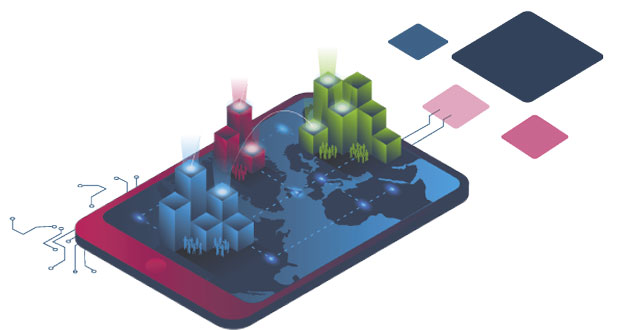 Karl Broom, Territory Manager, FSI on ways CAFM can help FM people manage new patterns of working within buildings and spaces used in very different ways from pre-COVID
Karl Broom, Territory Manager, FSI on ways CAFM can help FM people manage new patterns of working within buildings and spaces used in very different ways from pre-COVID
The challenges created by COVID-19 shone a spotlight on the essential role that FM professionals and the CAFM technology that they harness, play in how companies function day-to-day. Even at the height of lockdown, these were vital in facilitating remote working and mobile processes that maintained business continuity.
However, we are now entering a period of optimism, as more and more businesses prepare to reopen after months of isolation. While this is great news it presents another challenge that FMs will need to address in moving forward: building peoples’ confidence. But it’s a challenge for which the CAFM solution at site can step in, to help with managing new patterns of working which may be different to before, but can still be achieved.
MEETING RESERVATIONS ABOUT REOPENING
There are many people out there incredibly excited at the prospect of returning to their workplace; to catch up with colleagues face-to-face rather than through a screen and escape the confines of their home offices and enjoy a welcome change of scenery.
Yet, the excitement of some is tempered by anxiety about reopening. This could be for a variety of reasons:
- Fears of catching COVID-19 – a 2020 survey by Aviva revealed that 44 per cent of workers were fearful of virus transmission from colleagues
- Hesitance of meeting colleagues after a long absence – especially challenging for those hired during lockdown who have never entered their workplace or met coworkers in person
- Difficulties adjusting to new routines after becoming accustomed to remote/flexible working
These are the groups who will need the most reassurance that their environment will be safe, secure and comfortable upon returning to the workplace. FMs and their CAFM solutions can therefore play a crucial role in building that confidence and trust.
CLEAR, COMPREHENSIVE CLEANING REGIMES
First, with people more aware of the cleanliness of their surroundings in the post-COVID landscape, making your cleaning regimes as effective as possible will build confidence across your organisation.
As standards rise and checks tighten, no stone need be left unturned. Cleaning can be thorough and visible to the wider populace, so people are reassured that their workplace is offering as safe a space as possible.
CAFM software can make this comprehensiveness possible. For instance, a dedicated Cleaning App maintains an accurate, complete audit trail of every area that was cleaned throughout the day and at what times, which can be saved directly into the CAFM solution. Managers can check these at any time to ensure tasks are being fulfilled as expected.
Plus, it is important that both cleaners and staff are kept safe from areas becoming too densely populated, because despite buildings now reopening, COVID is still with us. CAFM technology can generate clear routes for cleaners to use throughout the day that will minimise the risk of encountering over-crowding during their patrols.
SUCCESSFUL SPACE MANAGEMENT
On the subject of crowding, FM teams will need to think carefully about the available space within their building, and how it can accommodate employees, residents, visitors and more in a safe, socially-distanced way.
Again, CAFM can make a massive difference to space management . From greatly reducing the chances of overcrowding at lifts, stairwells and other communal areas, to strategically spreading out the availability of rooms so they can comfortably contain set numbers of people for meetings and other activities, this software can capably organise workplaces with enhanced efficiency.
Whether there’s a greater degree of remote working, or staggered business hours to manage numbers in a building at any given time, space management will need to be more fluid than in prior years. Again, by consistently capturing spatial data throughout facilities, CAFM makes this more manageable and likely to help in building peoples’ confidence.
CONNECTING EMPLOYEES TO THEIR FM TEAMS
Another key to breeding confidence in employees returning to the workplace will be in creating a direct connection between themselves and FM professionals.
If something is causing personnel discomfort, be it an area that needs to be cleaned, or poor air quality in a room, the FM team can provide an app to all employees that empowers them to create tasks to be picked up by the FM team, with the task’s urgency rising as more people notice and report the problem.
This direct route for the workforce to those who can actively resolve their problems will reassure them that their needs are being looked after at work. They are given an active role in ensuring the entire building and its occupants are looked after, which will help everyone via the process of becoming accustomed once more to their workplace.
BENEFITTING FROM IOT
Finally, sensor technology once considered as a non-essential expense pre-pandemic will undoubtedly become more sought-after in future.
By connecting these to CAFM technology, FMs can start to manage workspaces based on occupancy levels – lighting, heating, ventilation and more can be controlled automatically or remotely to again reduce the number of persons that need to be on-site at any given time.
Harnessing IoT and the boundless data generated by business systems, this information can help FMs drive decisions to optimise their workspace, not only making it safer and more reassuring, but also more efficient and productive.
Adoption of CAFM solutions accelerated notably during these difficult months, to meet the challenges presented by remote and flexible working. As businesses now face the reality of returning to “normality”, we can only envisage this trend continuing to make sure employees are reassured at all times when back in the workplace.
More information on keeping your customers and workforce safe can be found here www.fsifm.com





